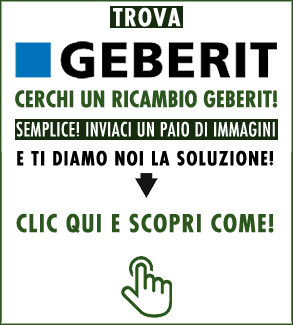
GEBERIT and its ultra-centenary history. Sanitary water control in the walls of the house, acquisition of the Pozzi Ginori brand, ceramics ‘outside the walls’ ( part 1 – 1874/1929 )
Today we want to discover the history of a brand in the bathroom furnishing world that is considered among the leaders in the sector: GEBERIT. We have talked about its recent history HERE and we quote a passage from it: “The Geberit Group has a global presence and is the European leader in sanitary ware. Geberit operates with an extensive local presence in most European countries, providing unique added value when it comes to bathroom plumbing and ceramics.
The production network comprises 29 production plants, 2 of which are in Italy, with 12,000 employees in 50 countries, of which almost 600 are in Italy. Geberit‘s shares have been listed on the SIX Swiss Exchange since 1999 and have been included in the SMI (Swiss Market Index) since 2012. With a current capitalisation of EUR 26.5 billion and a widespread shareholder base, Geberit generated a turnover of EUR 3.0 billion in 2020, 90 per cent of which is generated in Europe.”

But today we want to look at the origins, the starting point of a resounding success and dwell on some milestones. Which you can then possibly go into in more detail HERE: EVERY FUTURE NEEDS A PAST. THE HISTORY OF THE GEBERIT GROUP.
The beginning of the story goes back to 1874, on the Engelplatz in the old town of Rapperswill (CH) Caspar Melchior Albert Gebert (1850-1909) of St. Gallenkappel, opened a small sheet metal workshop. After about twenty years of hard work, the first results arrived and the ‘Phönix’ property on the sunny side of Engelplatz was purchased. A year later, the workshop is moved to these premises and a shop is opened on the ground floor.

And we come to the early 1900s, years marked by the first, but by no means small, revolution in the world of hydraulics made by the company. Already at that time, one could see the innovative and design capacity of this family’s water management. Their sons Albert Emil and Leo Gebert succeeded in producing the first lead-lined wooden flush cistern with lead fittings; called “Phönix”, this product is the cornerstone for future growth. The first float, the first lever-operated bell! The incredible success of this product among customers, who immediately recognised its reliability, led the company founders to register the first patent for the Phönix cassette in 1912. A few years and many sales of flush cisterns and Geberit begins to take the shape of an industry and abandon the idea of a craft workshop.

In 1916, the construction of a new factory hall and production facility began with the purchase of land on the Falkenstrasse in Rapperswil (CH). Over the next five years, production concentrated on lead-lined boxes with brass mechanisms and ball taps and valves. New machinery within the company began to develop important numbers on production batches. From this moment on, the step to start looking beyond the small Swiss domestic market to the huge European one is a moment’s notice. This historic phase is completed in 1929 with the opening of the company’s first field office with a warehouse in Paris.
We began to discover the history of the Geberit company. The strength of this company has always been the quality and reliability of its products. But also the ability to guarantee spare parts for its products in the years following purchase. If you are looking for Geberit spare parts we recommend this LINK.





